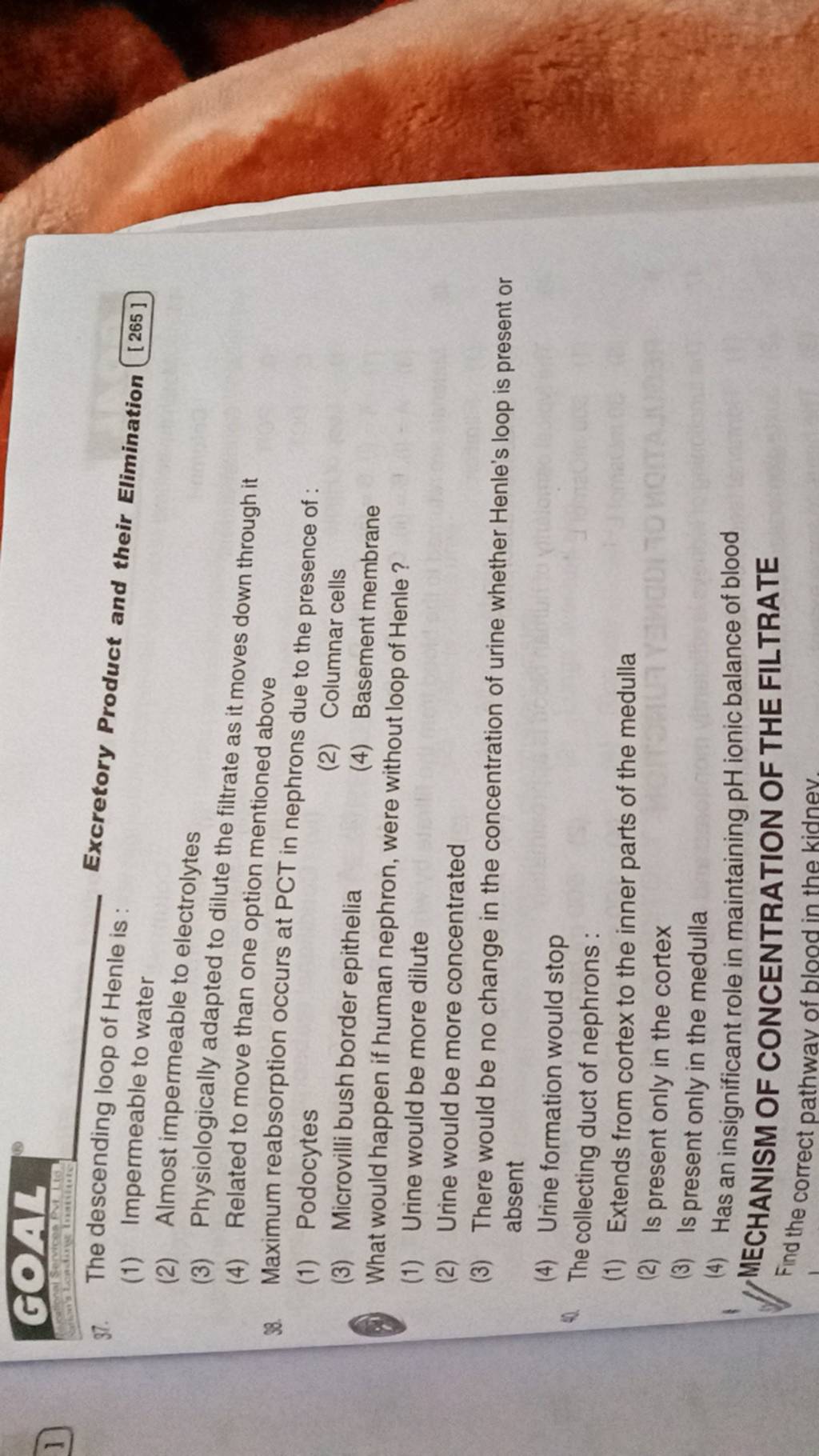Question
Question asked by Filo student

The descending loop of Henle is : Excretory Product and their Elimination
- Impermeable to water
- Almost impermeable to electrolytes
- Physiologically adapted to dilute the filtrate as it moves down through it
- Related to move than one option mentioned above
Found 3 tutors discussing this question
Discuss this question LIVE
5 mins ago

One destination to cover all your homework and assignment needs
Learn Practice Revision Succeed

Instant 1:1 help, 24x7
60, 000+ Expert tutors

Textbook solutions
Big idea maths, McGraw-Hill Education etc

Essay review
Get expert feedback on your essay

Schedule classes
High dosage tutoring from Dedicated 3 experts
Practice more questions on Human Physiology
Question 2
Medium
Views: 6,305
Question 3
Hard
Views: 5,939
Algae are diverse group of aquatic organisms that have the ability to conduct photosynthesis. They are unicellular or multicellular and undifferentiated organisms that occur in variety of forms and sizes. Algae belong to a polyphyletic group, i.e. the organisms of this group are not necessarily related to each other. Based on the pigment, composition and reserved food material, algae has been divided into three major classes, viz. Chlorophyceae, Phaeophyceae and Rhodophyceae.
The members of these classes also differ in cell wall composition, stored food material, body structure, mode of reproduction, etc. (i) A representative organism of classRhodophyceae is (a) Spirogyra (b) Fucus (c) Polysiphonia (d) Chlorella (ii) Multicellular, saline forms are found in (a) Rhodophyceae (b) Chlorophyceae (c) Phaeophyceae (d) All of the above (iii) Stored food material in classPhaeophyceae is (a) mannitol and laminarin (b) floridean starch (c) pyrenoids (d) All of the above (iv) Cell wall of Porphyra (red algae) contains (a) cellulose (b) pectins (c) polysulphate esters (d) All of these (v) Consider the following statements. I. Large amounts of hydrocolloids are produced by certain marine red and brown algae. II. Algin and carrageenan are commercially used as water holding materials. Choose the correct option. (a) Statement I is correct, but II is incorrect (b) Statement I is incorrect, but II is correct (c) Both statements I and II are correct (d) Both statements I and II are incorrect
Students who ask this question also asked
Question 2
Views: 5,273
Question 3
Views: 5,568
Question 4
Views: 5,618


Stuck on the question or explanation?
Connect with our Biology tutors online and get step by step solution of this question.
231 students are taking LIVE classes
| Question Text | The descending loop of Henle is : Excretory Product and their Elimination |
| Updated On | Nov 22, 2022 |
| Topic | Human Physiology |
| Subject | Biology |
| Class | Class 11 |
| Answer Type | Video solution: 1 |
| Upvotes | 82 |
| Avg. Video Duration | 10 min |



